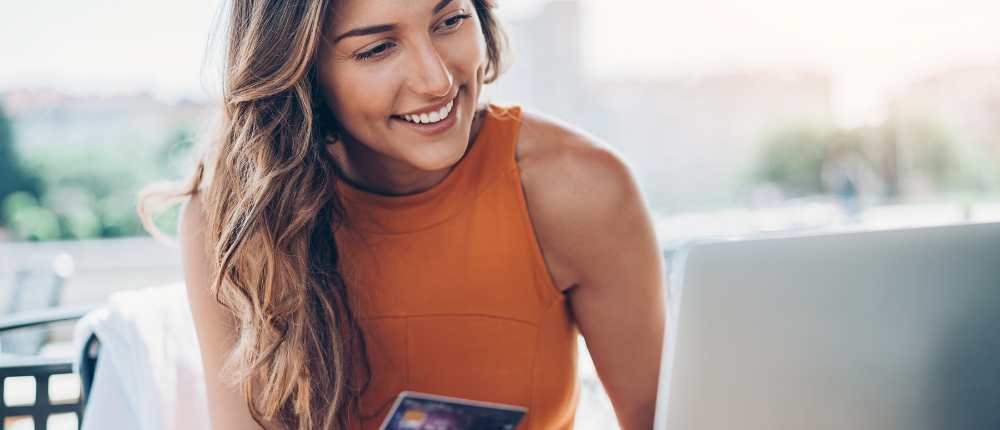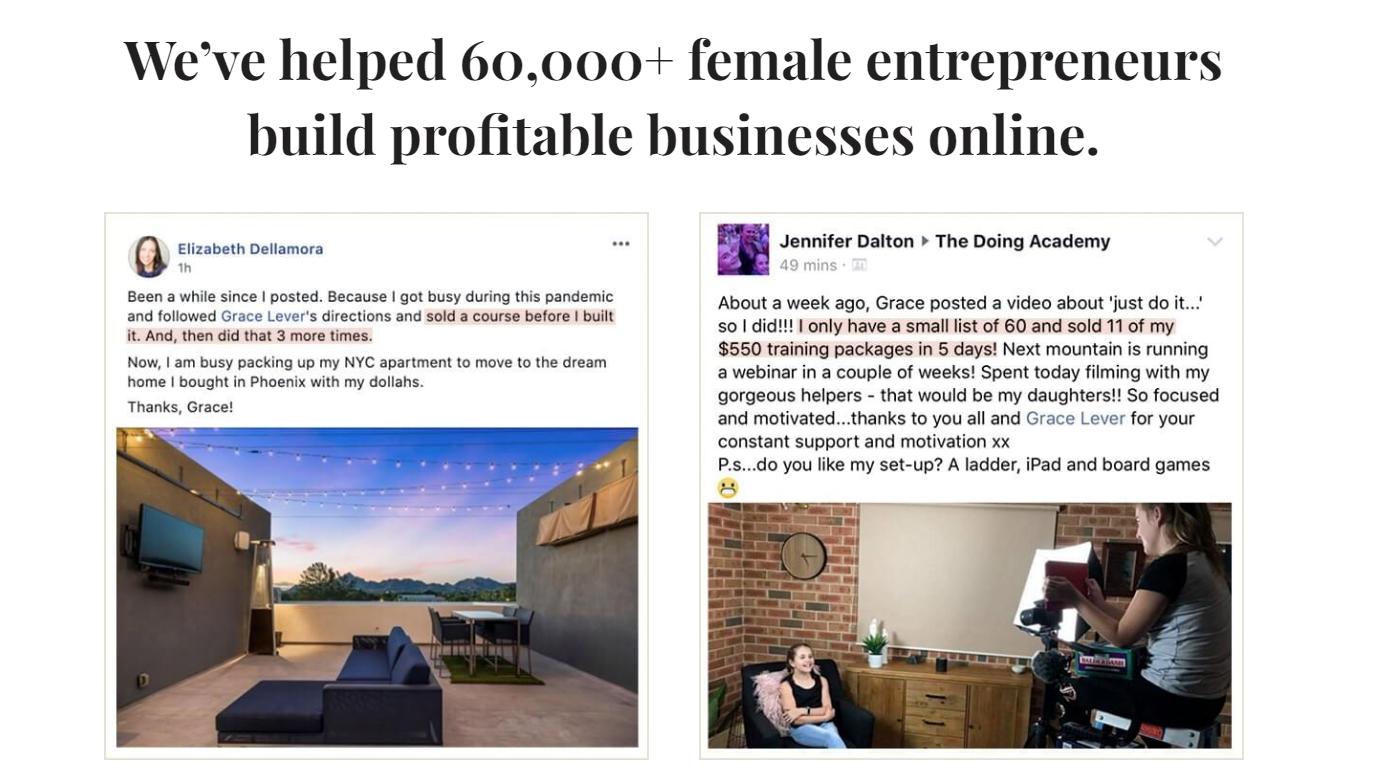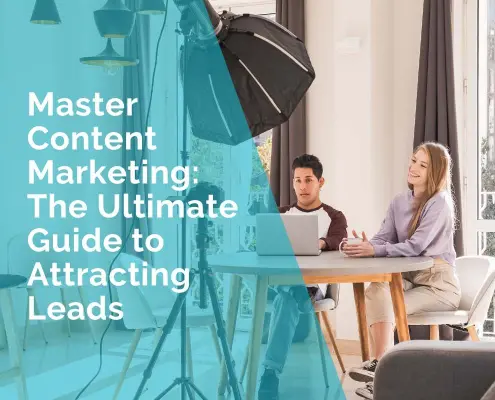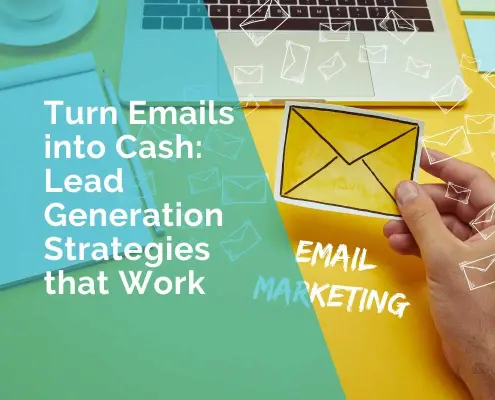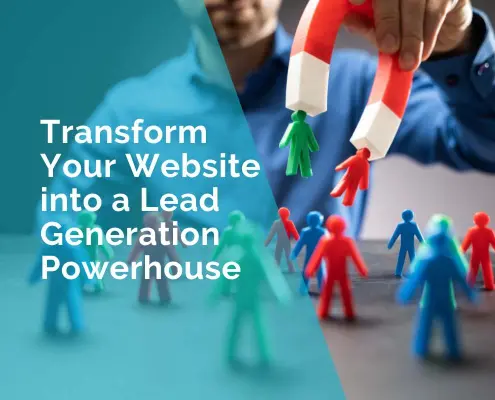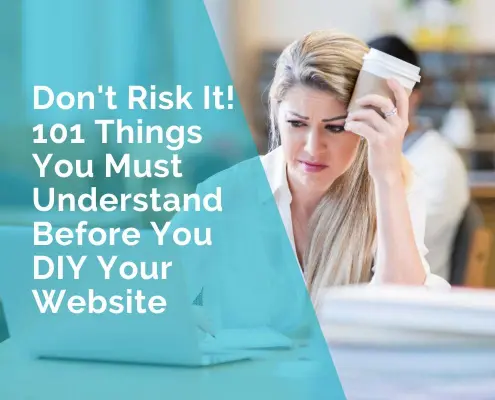2. Show you’re an expert in your field.
When visitors are looking for information on the internet, they want to be sure they are getting accurate and up-to-date details from a credible source. That’s why it’s important to show you’re an expert in your field.
By becoming an authority in your area, you can build credibility with your audience and make sure that they’re getting the best information possible.
For example, you can consider writing guest posts or articles for other websites in your industry. This can help you build relationships with other experts in your field and get your name out there as an authority on your topic.
Whether you’re a seasoned professional or just starting out in your field, speaking at conferences can also be a great way to build credibility and showcase your expertise. When you speak at a conference, you have the opportunity to share your knowledge with an audience of your peers, which can help position you as an authority.
Finally, don’t forget to include plenty of references and sources on your website. This will show your audience that you’re not just making things up as you go along, but that you’re really doing your research and that you know what you’re talking about.
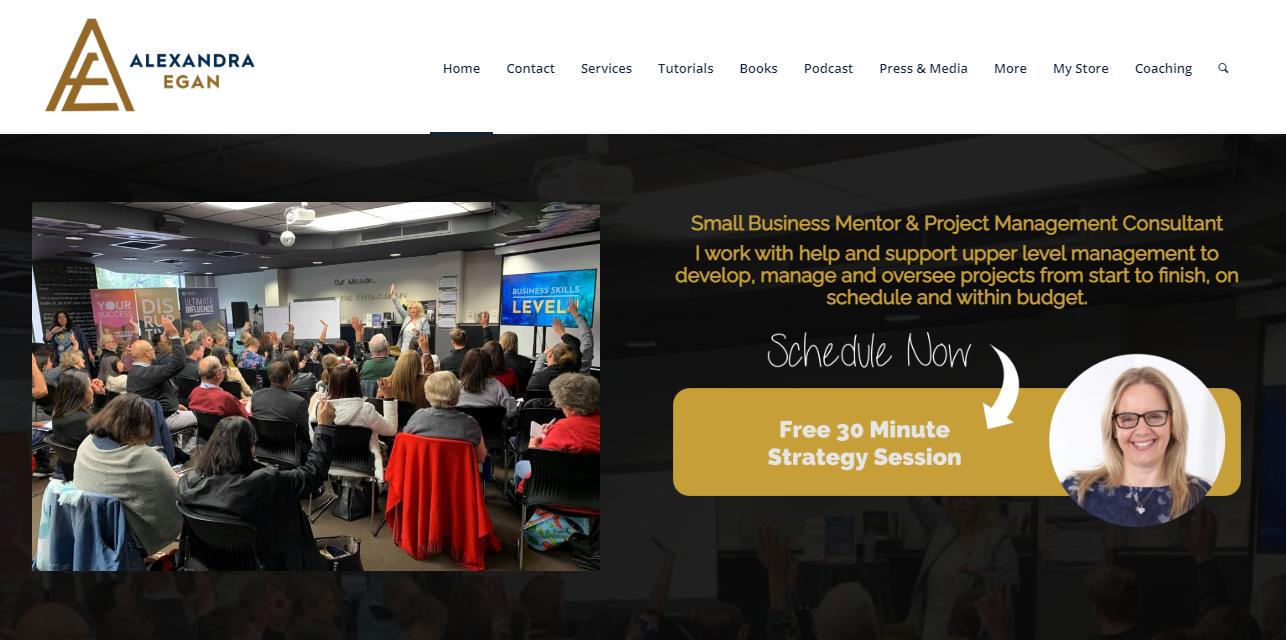
3. Be active on social media
Social media platforms have become an essential tool for businesses to establish and maintain their online presence. By actively engaging with your audience through social media marketing, you can build a loyal following and establish yourself as an authority in your industry.
To build credibility on social media, it’s important to share valuable content that is relevant to your target audience. This can include informative blog posts, engaging videos, or insightful infographics. By providing useful information, you can position yourself as an expert in your field and demonstrate your commitment to helping your followers.
In addition to sharing valuable content, it’s also important to engage with your audience. This can include responding to comments and messages, participating in online discussions, and sharing relevant content from other experts in your industry. By actively engaging with your audience, you can build trust and establish yourself as a thought leader in your field.
It’s worth noting that building credibility as a small business owner takes time and consistent effort. You’ll need to create a content strategy that aligns with your business goals and consistently publish high-quality content. You’ll also need to monitor your social media accounts and respond promptly to any questions or concerns from your followers.
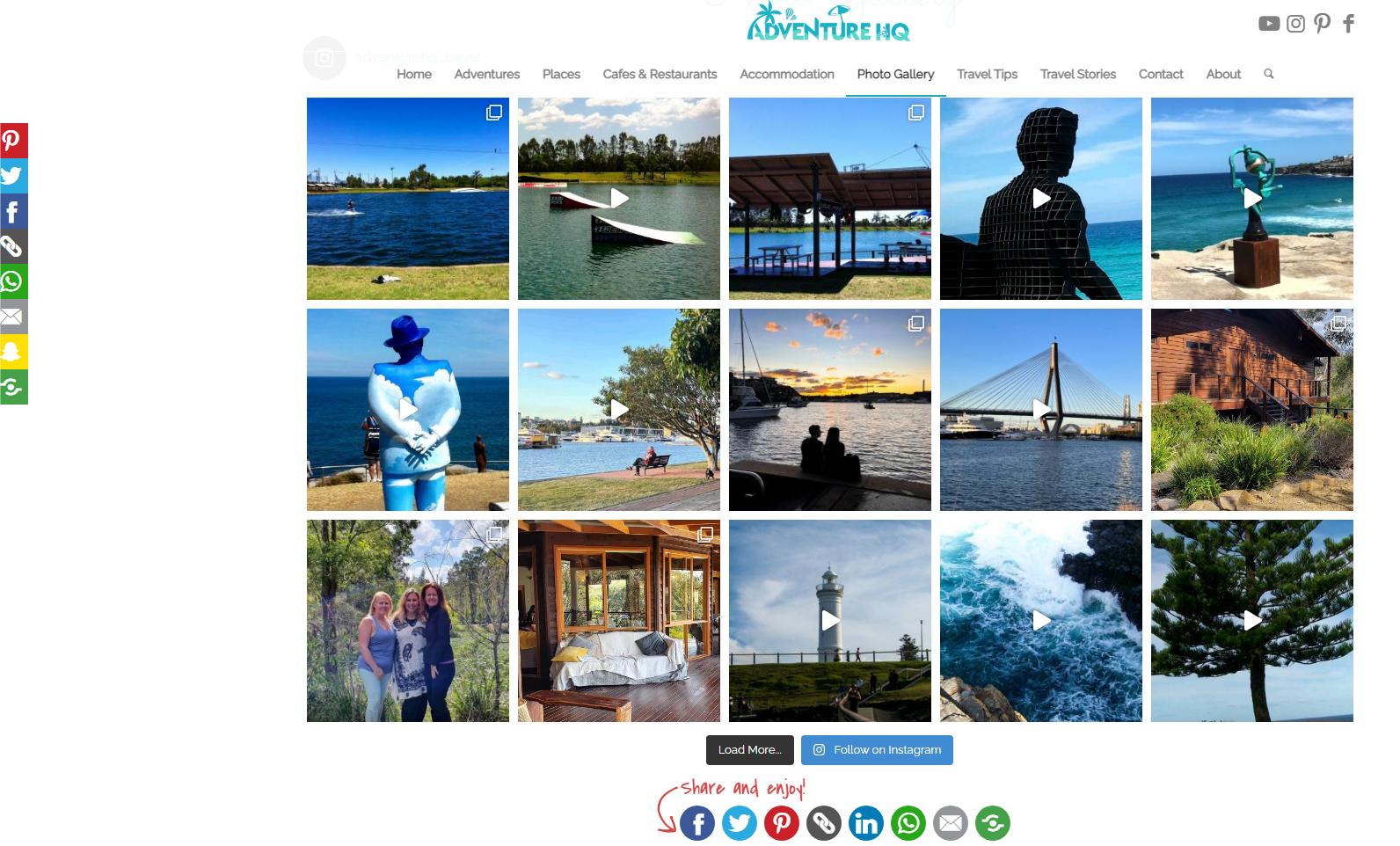
4. Third-party endorsements
Third-party endorsements are a powerful tool in building trust and credibility with potential customers. When a business is endorsed by a well-known and respected organization, it can go a long way in establishing its reputation as trustworthy and reliable.
Third-party endorsements can come in a variety of forms, including awards, certifications, and partnerships.
For example, if a business receives a prestigious industry award, such as “Best Customer Service” or “Most Innovative Product,” this can be a powerful endorsement that can help build trust with potential customers.
Similarly, if a business is certified by a recognized industry organization, this can help demonstrate that they adhere to high standards and can be trusted to provide quality products or services.
Partnerships with well-known organizations can also be a powerful endorsement.
For example, if a business partners with a well-known charity or nonprofit organization, this can help demonstrate that they care about social responsibility and giving back to the community. This can help build trust with potential customers who value these qualities in a business.
In addition to building trust, third-party endorsements can also help to build brand awareness and name recognition. When a business is endorsed by a household name or recognized industry organization, it is likely to get noticed by a lot more people. This can help to increase brand visibility and awareness, which can lead to increased sales and revenue over time.
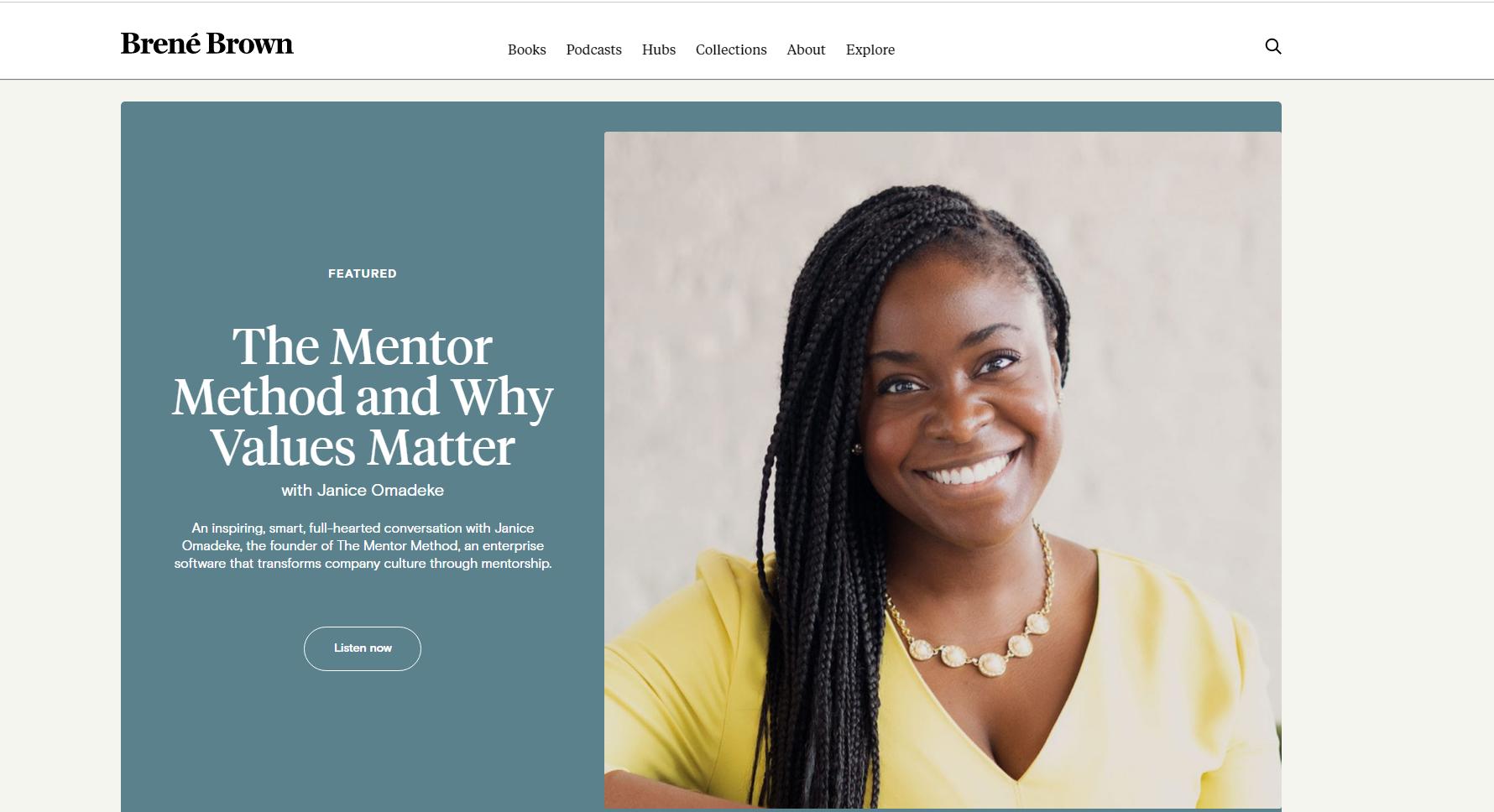
5. Press mentions
Getting media mentions is essential for any business or individual looking to raise their profile and increase their visibility. Media mentions can come in the form of traditional news articles, blog posts, or even social media posts. Regardless of the form, media mentions provide a valuable opportunity to reach a wide audience and build credibility.
One of the main benefits of media mentions is that they help to establish trustworthiness. When prospective customers see that you have been featured in credible media outlets, they are more likely to trust your brand and consider doing business with you. In addition, media mentions can help you attract new customers by increasing your reach.
By appearing in media outlets that your target market trusts and follows, you can introduce them to your brand and products or services.
Media mentions can also boost your search engine ranking, making it easier for potential customers to find you when they are searching for businesses like yours.
If you are looking to raise your profile and attract new customers, make sure to actively pursue opportunities for media coverage.
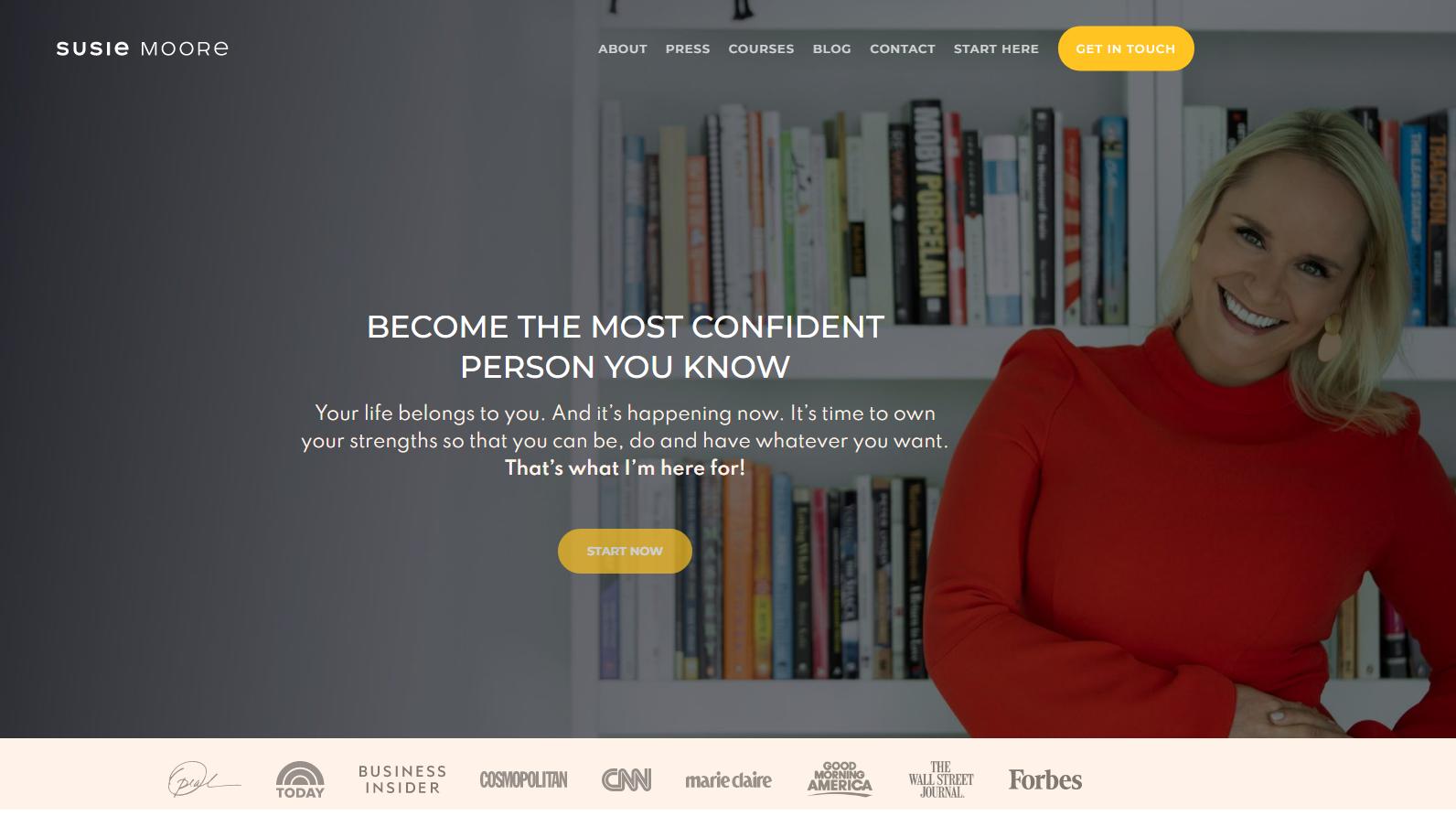
6. Opt-in forms
Opt-in forms help to build trust by ensuring that visitors only receive information that they have explicitly requested. This helps to avoid spamming people with unwanted emails, and it also ensures that the information people do receive is relevant to their interests.
In addition, opt-in forms can help to build relationships with customers and prospects by providing a way for them to sign up for updates and special offers.
If you do collect email addresses, make sure you keep in touch with your subscribers on a regular basis, providing valuable and relevant information that helps to solve their problems.
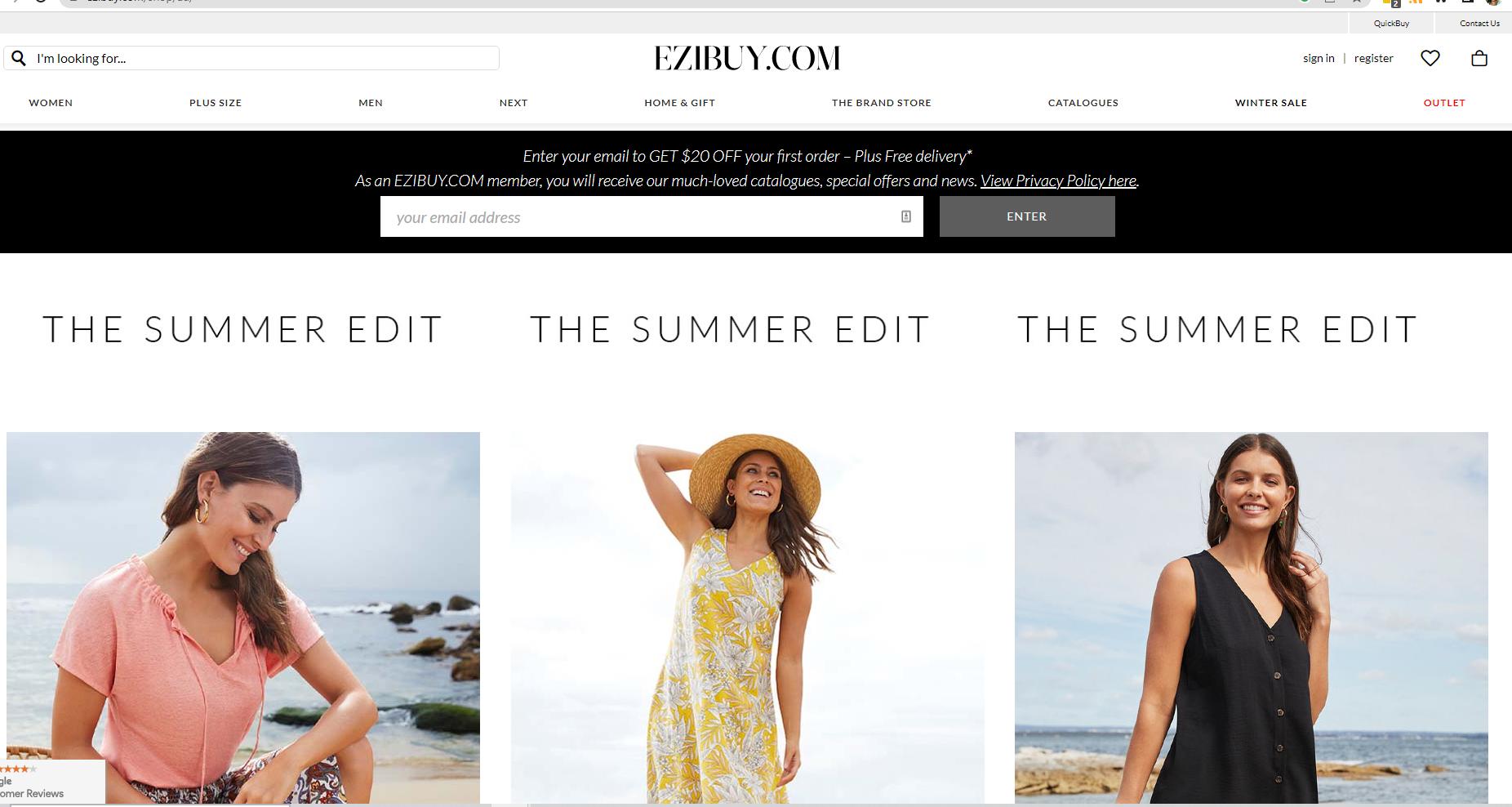
7. Include calls-to-action
A call to action is an effective way to encourage your website visitors to take the next step. Whether you’re asking them to sign up for a newsletter, download a white paper, or make a purchase, a well-written call to action can make all the difference.
Not only does it provide clear and concise instruction, but it also helps to build trust and credibility. After all, if you’re confident enough in your product or service to ask for a commitment, it’s likely that visitors will feel the same way.
In addition, calls to action can help to increase conversion rates by providing a sense of urgency. By making it clear that you want visitors to take action now, you’re more likely to prompt them to do just that.
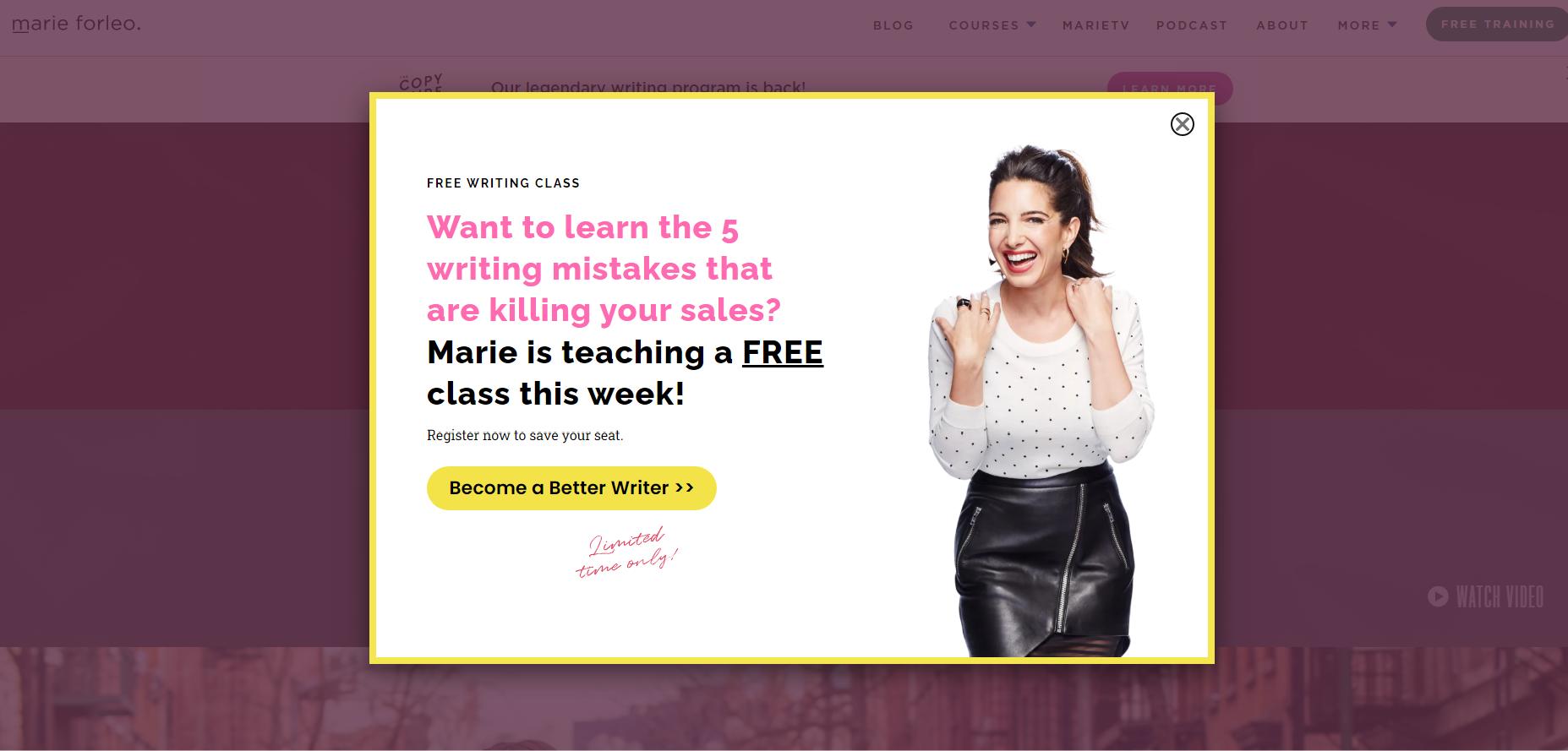
8. Offer a freebie or discount in exchange for an email address
Offering a freebie or a discount in exchange for a visitor’s email address can be a powerful way to build trust and create a relationship with potential customers. By offering something of value without asking for anything in return, you demonstrate that you are willing to go above and beyond to provide a positive experience for your customers.
In addition to building trust, offering a freebie or discount can also help to create a sense of reciprocity. When someone receives something for free or at a discount, they are more likely to feel obligated to reciprocate in some way, such as by making a purchase or sharing their experience with others. This can help to build a positive relationship between you and the potential customer, which can lead to increased sales and revenue over time.
It’s important to note that the freebie or discount should be relevant to your business and of value to your potential customers. For example, if you’re a clothing retailer, offering a discount on a popular item or a free styling session can be a powerful way to entice potential customers to provide their email address. Similarly, if you’re a service provider, offering a free consultation or a guide to solving a common problem in your industry can be an effective way to build trust and establish yourself as an authority.
In order to maximize the impact of your freebie or discount offer, it’s important to promote it effectively. This can include placing prominent calls-to-action on your website and social media channels, as well as using targeted advertising and email marketing campaigns to reach potential customers who may be interested in your offer.
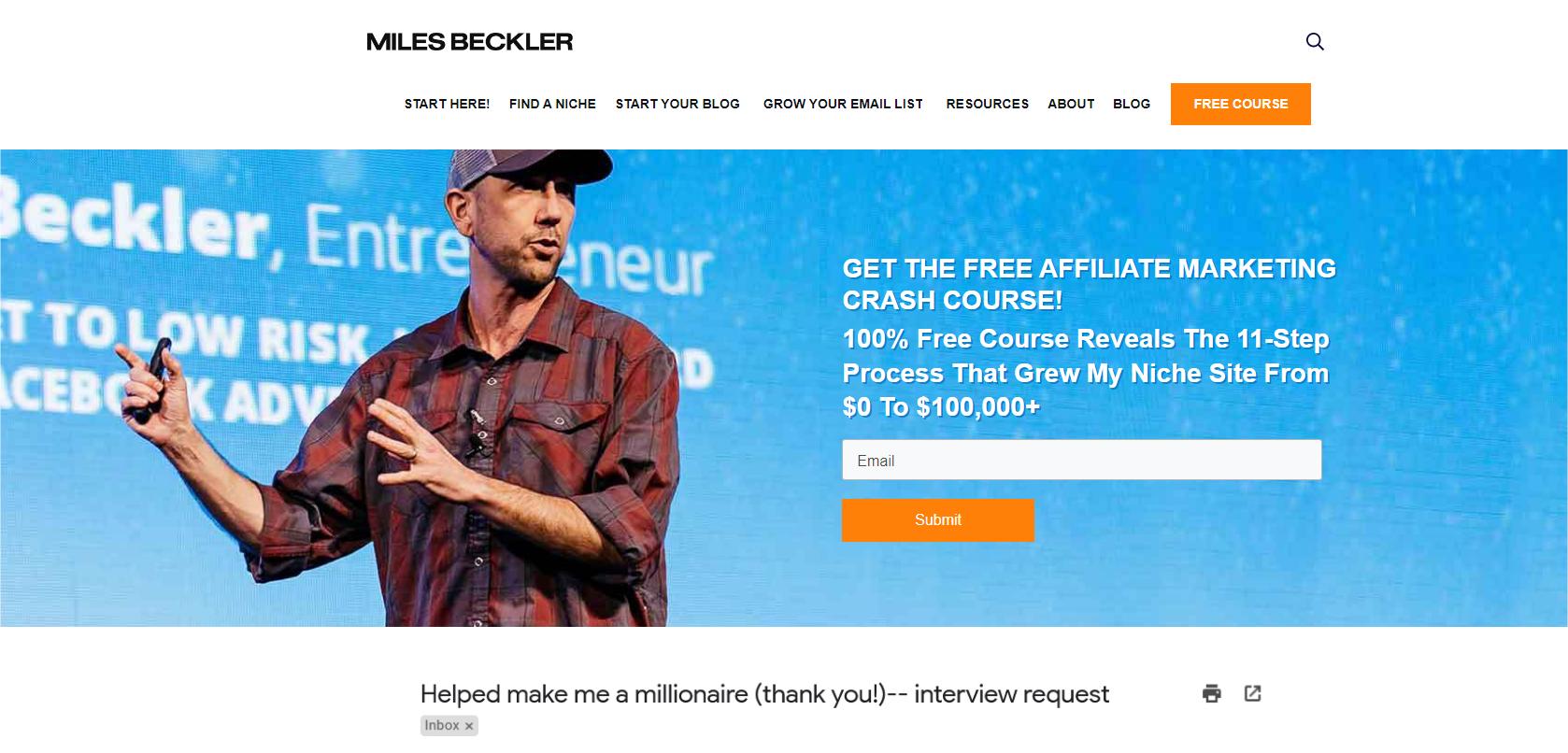
9. Connect with influencers in your industry
If you want people to trust your website, it’s important to connect with influencers. Influencers are people who have a large following and are trusted by their followers.
When you connect with influencers, they can help to promote your website and build trust among their followers. This is because people tend to trust the recommendations of people they know and respect.
Therefore, by connecting with influencers, you can tap into their social networks and reach a larger audience. In addition, influencers can also help to add credibility to your website. When people see that an influencer is recommending your website, they’ll be more likely to trust it.
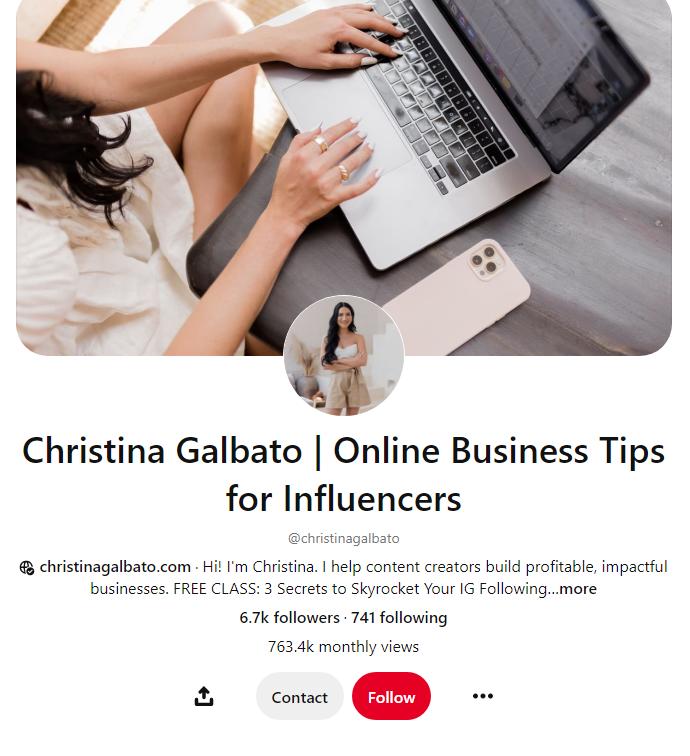
10. Create helpful content.
When you’re first starting out in business, it can be tempting to cut corners when it comes to your small business marketing efforts.
After all, there’s only so much time in the day, and creating helpful content takes time and effort. However, if you want to build a strong reputation and establish yourself as an expert in your field, it’s important to create helpful content such as ebooks, checklists, how-to’s and guides.
By providing valuable information to your target audience, you’ll not only build credibility, but you’ll also set yourself apart from your competitors. I
n today’s crowded marketplace, standing out from the crowd is essential for success. So if you want to give your business the best chance of success, make sure you invest the time and effort into creating great content.

11. Make sure your website is up-to-date and informative
In today’s fast-paced world, it’s more important than ever to keep your website up to date. After all, your website is often the first point of contact between you and potential customers.
If your website is out of date, it can give the impression that your business is too. Furthermore, an outdated website can be a security risk. Hackers are always on the lookout for vulnerabilities, and an outdated website is more likely to have them.
By keeping your website up to date, you can help to ensure that it is both secure and responsive to the needs of your customers.
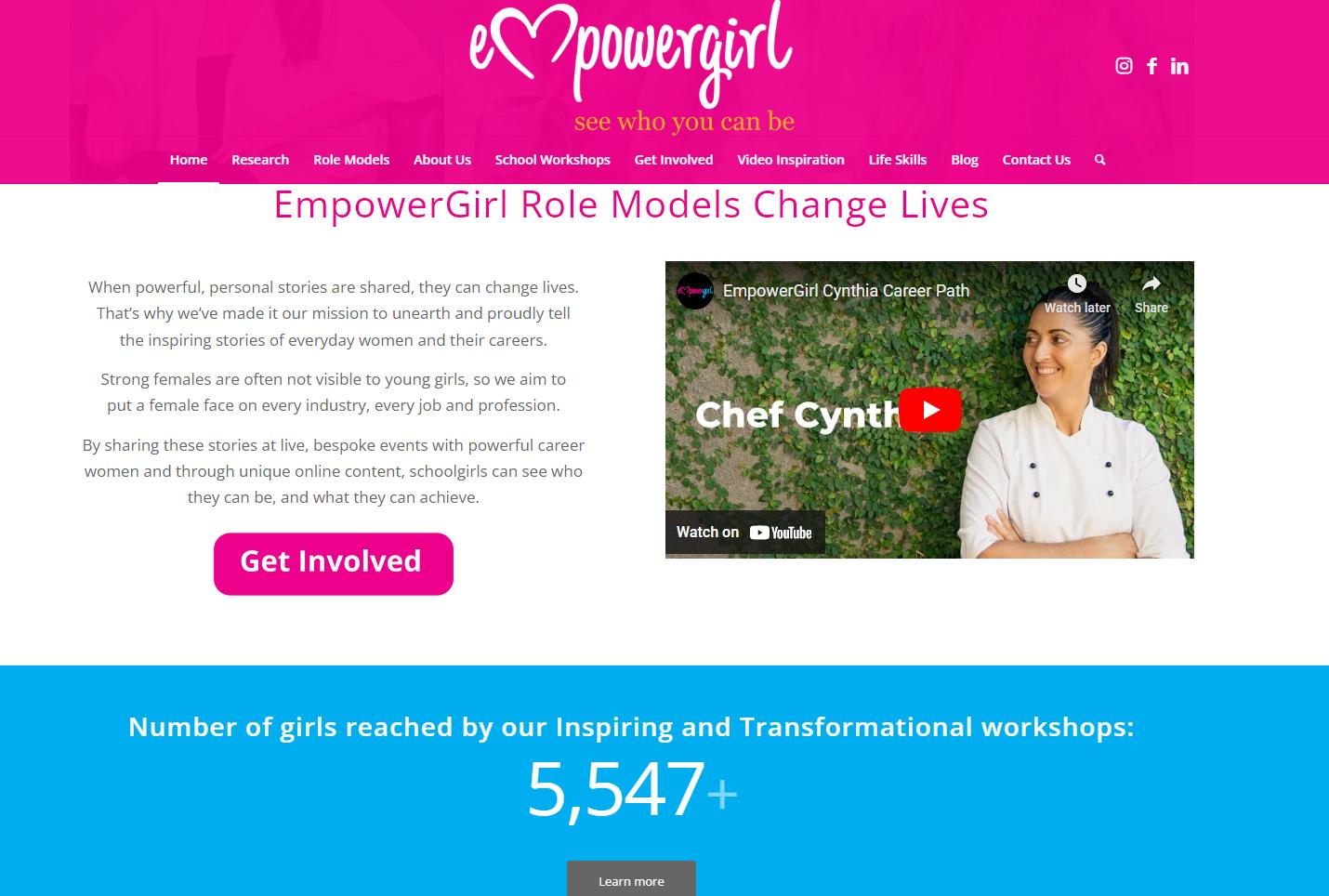
12. Use strong imagery
Your website is your online storefront, and first impressions are everything. In order to stand out from the millions of other websites out there, it is important to use strong and original imagery.
The right image can convey a mood or feeling, and it can tell a story that words alone cannot. When used effectively, images can be a powerful tool for engaging your audience and encouraging them to take action.
It is important to remember, however, that not all images are created equal. In order to make sure that your images are working for you, be sure to choose high-quality photos that are relevant to your brand and your message. With the right imagery, you can make your website a powerful marketing tool.
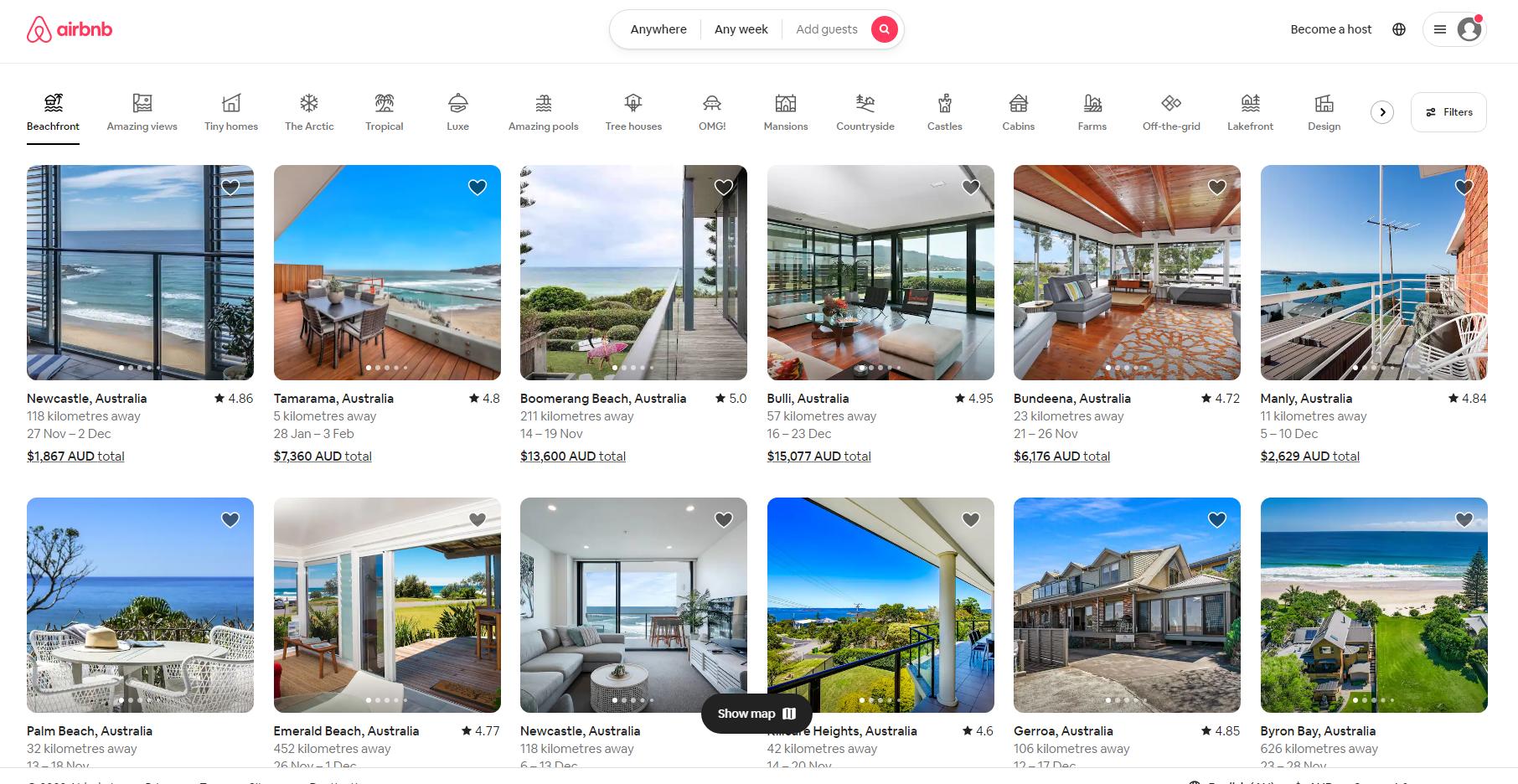
13. Don’t be afraid to showcase your awards and accolades
When potential customers visit your website, they want to know that you’re an authority in your industry. One of the best ways to establish credibility is to showcase your awards and accolades on your site.
Seeing that you have been recognized by your peers can go a long way in gaining the trust of potential customers. Moreover, it helps to show that you are constantly striving to improve your products and services.
By prominently displaying your awards on your website, you can give potential customers the peace of mind that they are dealing with a reputable company.

14. Build credibility with your numbers
One of the best ways to build credibility is to showcase your track record of success. If you’ve helped a lot of people or sold a lot of products, by sharing those numbers you can show potential customers that you’re a credible source.
Of course, mere numbers don’t tell the whole story. But they can be a powerful way to build trust and demonstrate that you’re an authority in your field. When used effectively, showcasing your track record of success can be a powerful tool for attracting new customers and growing your business.
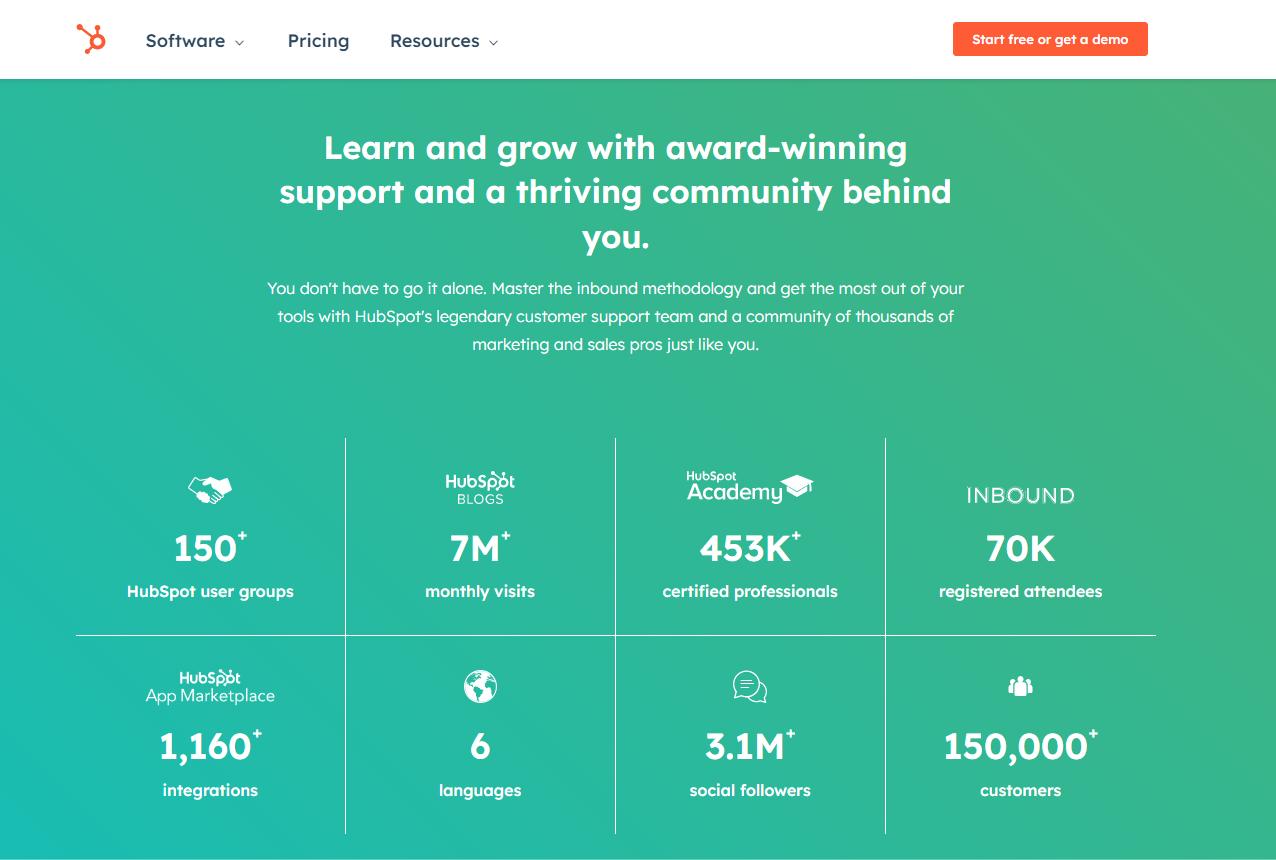
15. Increase credibility with client or supplier logos
Logos are an important part of any business, large or small. They are often the first thing that people notice about a company, and they can help to create a lasting impression. For businesses, it is especially important to showcase logos in a way that is both professional and eye-catching.
Well-known brands have spent countless hours and millions of dollars developing their logos and building their brand identity. By prominently displaying the logos of well-known brands that you represent or who you have worked with, you can tap into that equity and build trust with potential customers.
In today’s competitive marketplace, any advantage that a business can get is worth pursuing. So if you’re looking to give your business a boost, start by giving your well known clients or suppliers’ logo some prime real estate.

16. Before and After Photos
Before and after photos are a type of visual content that can be highly effective in building trust with your audience. Here are a few ways that you can use before and after photos to establish credibility:
- Demonstrate the effectiveness of your product or service: Before and after photos can be a powerful way to show the effectiveness of what you’re offering. Whether you’re selling a weight loss product or a skincare treatment, before and after photos can demonstrate the results that your customers can expect.
- Show your expertise: Before and after photos can also help to establish your expertise and knowledge in your field. By showing how your product or service has helped other people, you can demonstrate that you understand the challenges that your customers are facing and that you have the knowledge and experience to help them.
- Build trust with your audience: When potential customers see real-life examples of the benefits that your product or service can provide, they’re more likely to trust your brand. By sharing before and after photos, you’re providing visual evidence that your product or service works, which can be a powerful way to build trust and establish credibility.
It’s important to use before and after photos in an ethical and transparent way. Make sure that the photos are genuine and that you’re not using any photo editing tricks to make the results appear better than they actually are.
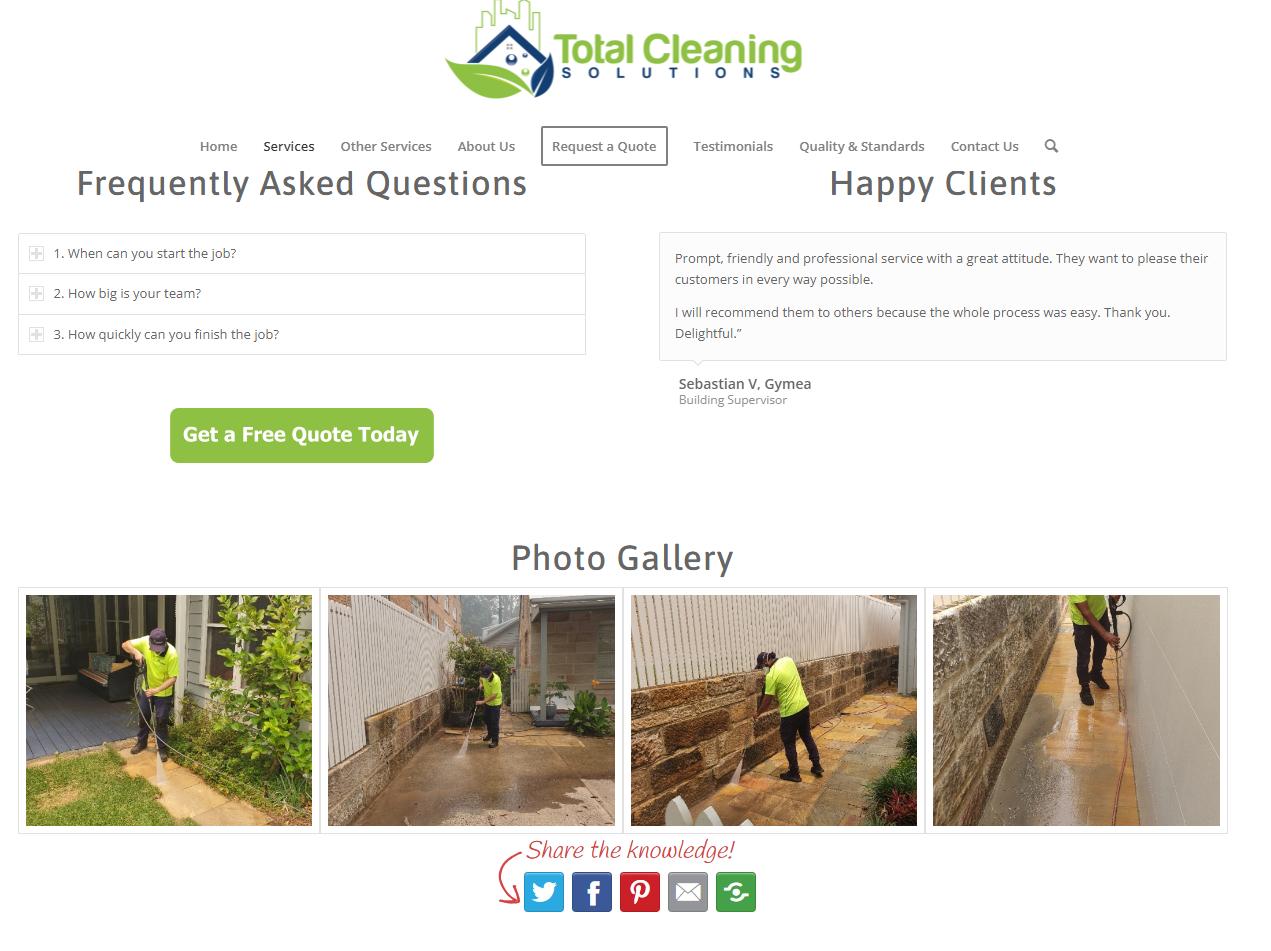
17. Portfolio of Completed Projects
No matter what your line of work, it’s important to have an up-to-date portfolio on your website. Whether you’re a freelance writer looking for new clients, a graphic designer trying to land a dream job, or a salesperson trying to close a big deal, potential clients will want to see what you’re capable of before they commit to working with you.
Even if you don’t have an extensive portfolio, including a few select projects can give potential clients the confidence they need to see that you’re the right person for the job. So make sure to keep your portfolio updated – it could be the key to landing your next big client.
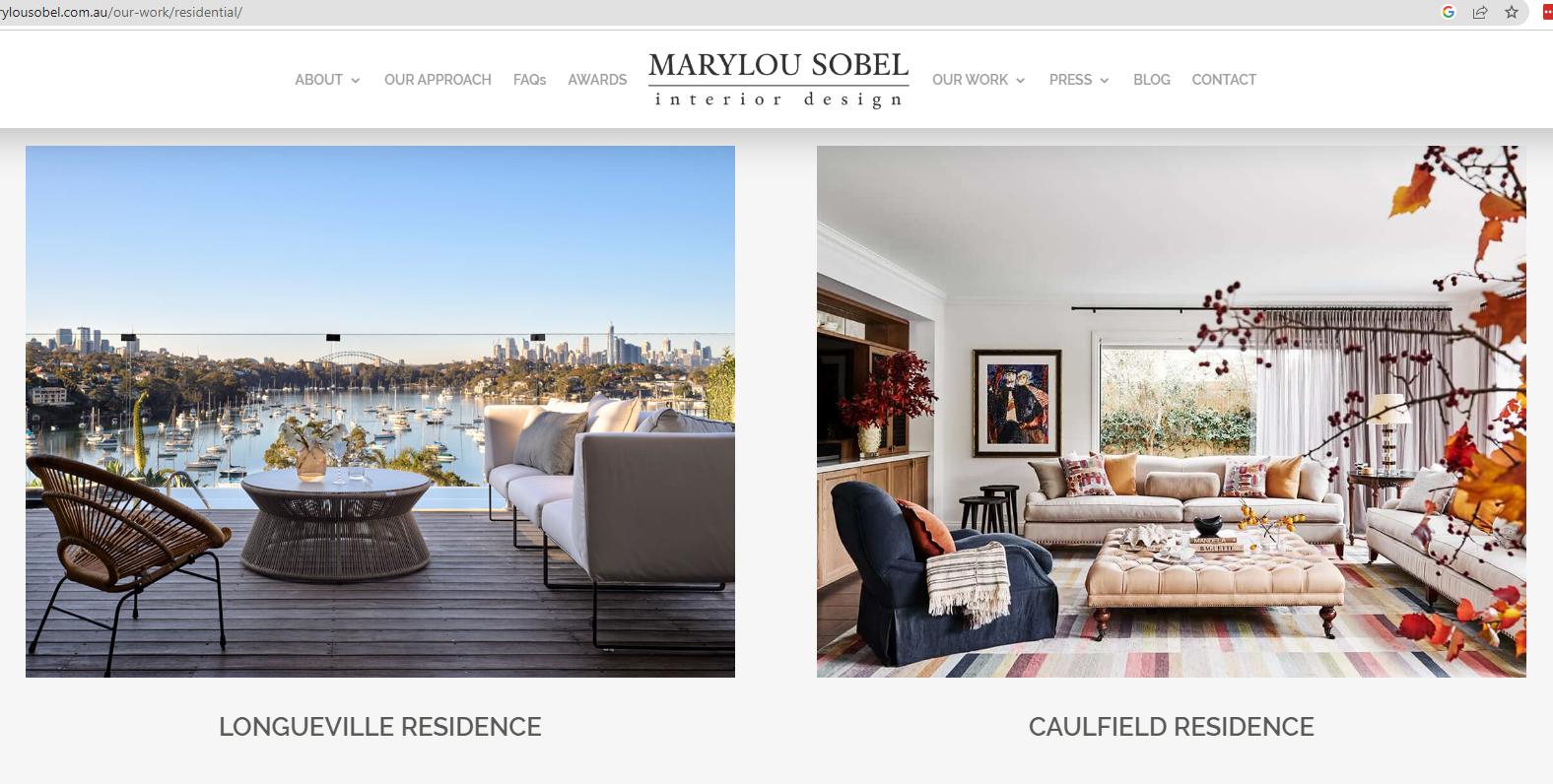
18. Money Back Guarantee
When you’re running a business, it’s important to take every opportunity to remove any risk for your potential customers. One way to do this is to offer a money-back guarantee on your website.
This tells visitors that you’re confident in your product or service and that you’re willing to stand behind it. In today’s competitive marketplace, a money-back guarantee can be the difference between a customer choosing your business over a competitor.
It shows that you’re committed to customer satisfaction and that you’re willing to go the extra mile to make sure your customers are happy. So if you’re not already offering a money-back guarantee, now is the time to consider it. It could be just what you need to take your business to the next level.
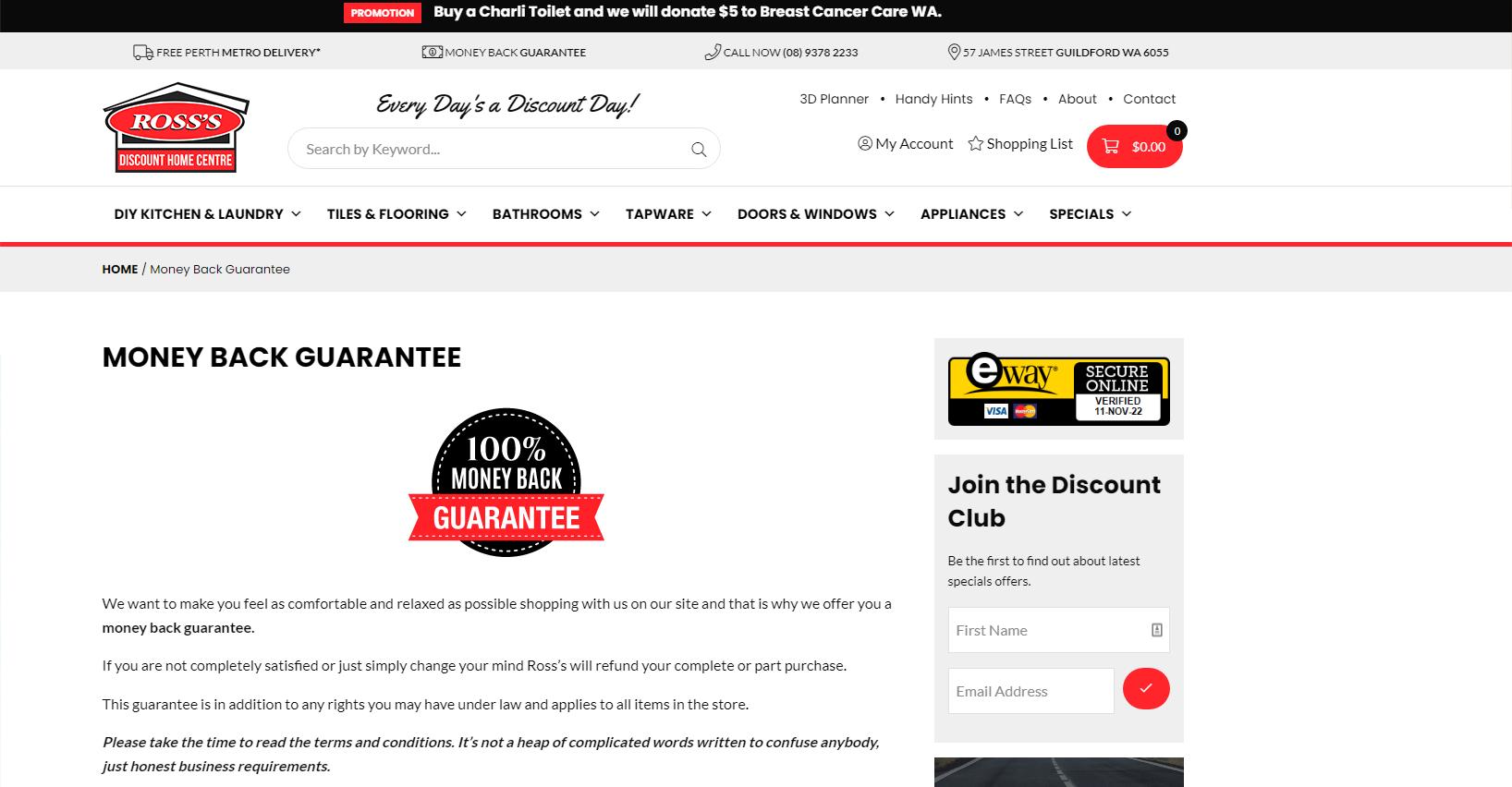
19. Third Party Certification and Industry Association Membership
One way to build trust with potential customers is to include third-party certifications and trade association memberships on your website. These endorsements from trusted organizations can go a long way in convincing visitors that your business is credible and worth doing business with. Plus, including their logos and badges on your website can help you stand out from the competition.
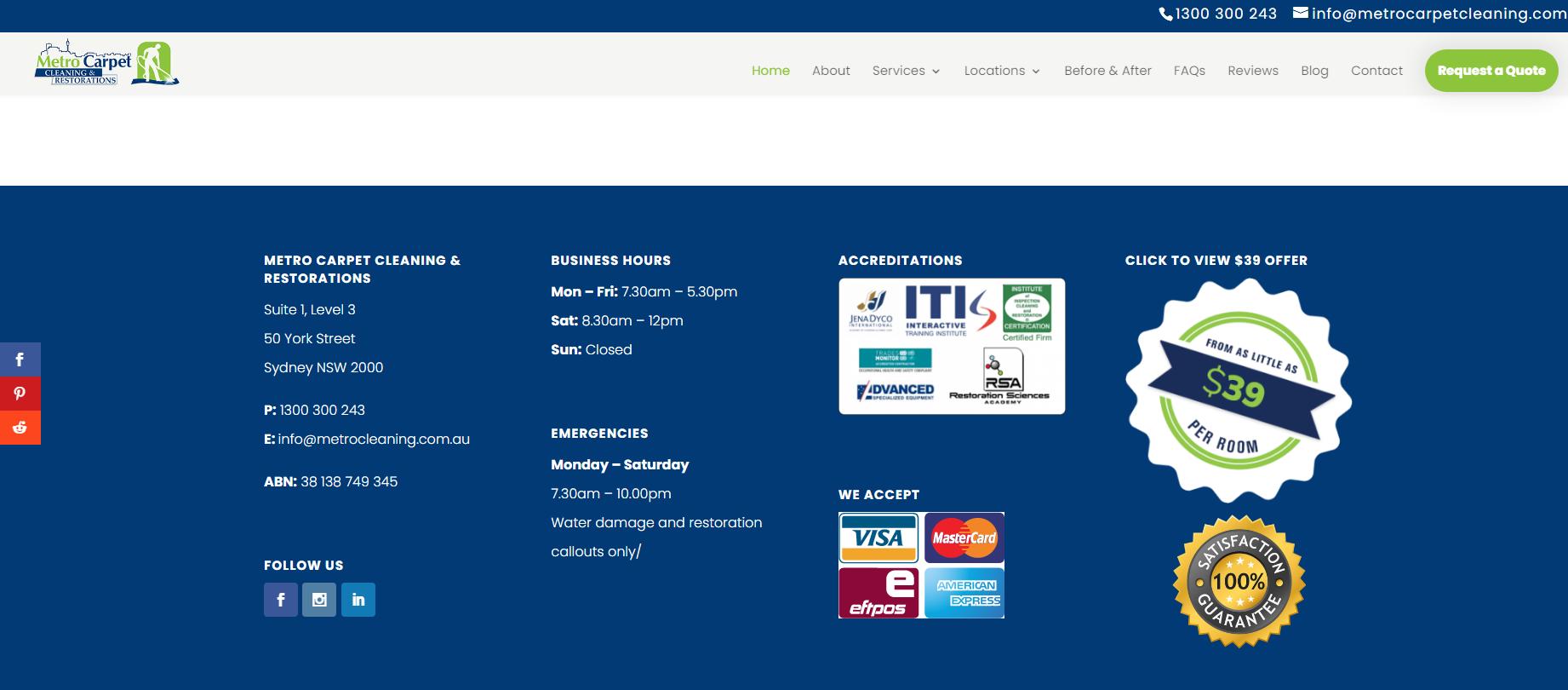
20. Make it easy for people to contact you
Make it as easy as possible for customers to get in touch with you. After all, if they can’t reach you, they can’t give you their money!
That’s why it’s essential to include multiple ways to contact your business. Adding details such as your email address, phone number, and social media links is helpful. If you have a brick-and-mortar location, be sure to include your address as well.
And if you’re selling products or services online, make sure there’s an easily accessible form or live chat.
The bottom line is that you want to make it as easy as possible for customers to contact you in a way that is convenient for them. So make sure your contact information is prominent and up-to-date – your bottom line will thank you for it!
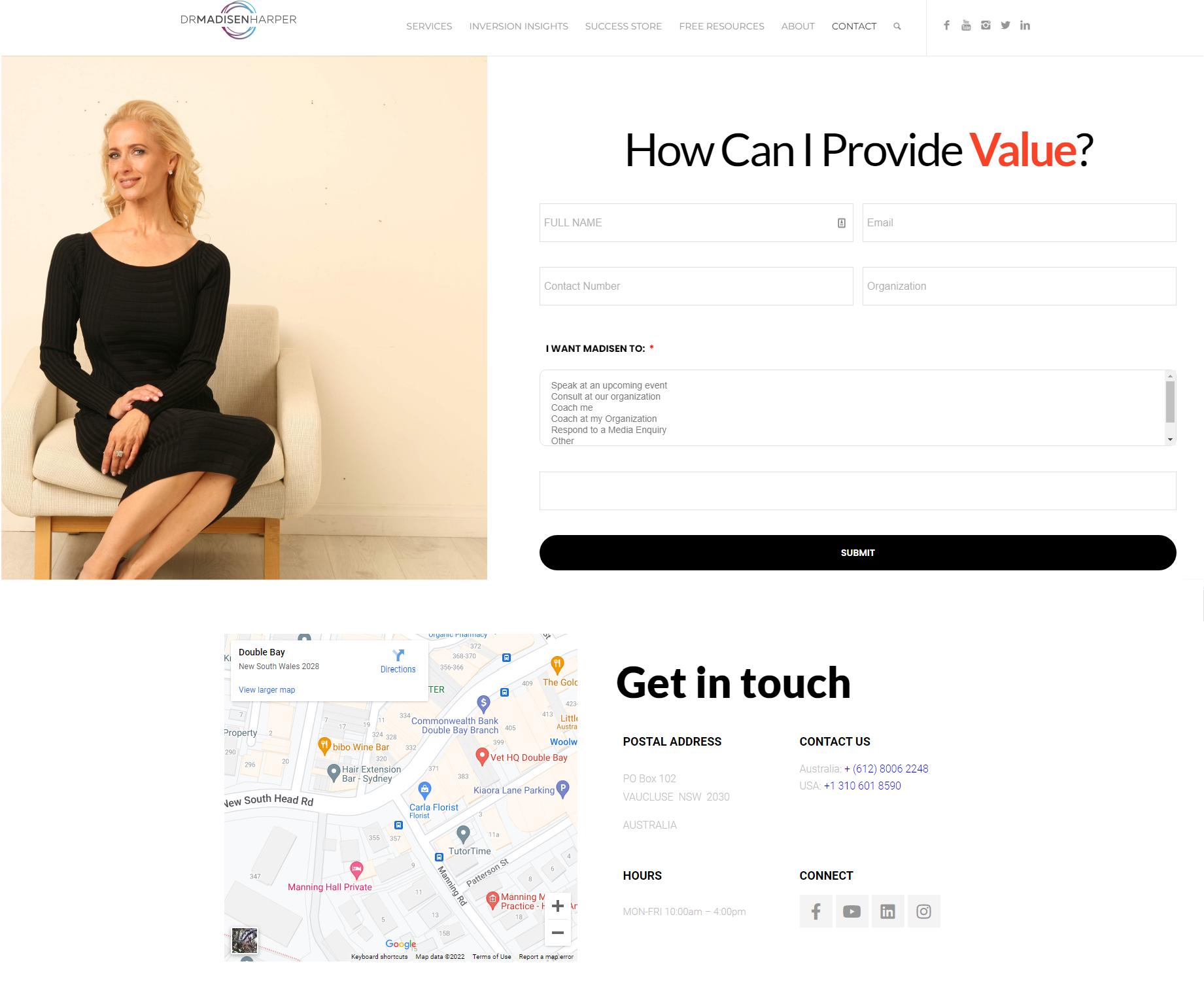
21. Be transparent – share your story, who you are, what you stand for, etc.
Part of having a strong online presence is being transparent about who you are and what you stand for.
Your website is often the first point of contact potential customers have with your business, so it’s crucial that it gives them a clear and accurate picture of what your business is all about.
When you’re transparent about your values and goals, potential customers are more likely to trust you and feel comfortable doing business with you.
Furthermore, you should also be open and honest about any areas where you might fall short. For example, if you’re a small company that can’t always offer 24/7 customer support, say so upfront.
By being transparent about who you are and what you stand for, you’ll give visitors the information they need to make an informed decision about doing business with you. And that’s good for everyone involved.
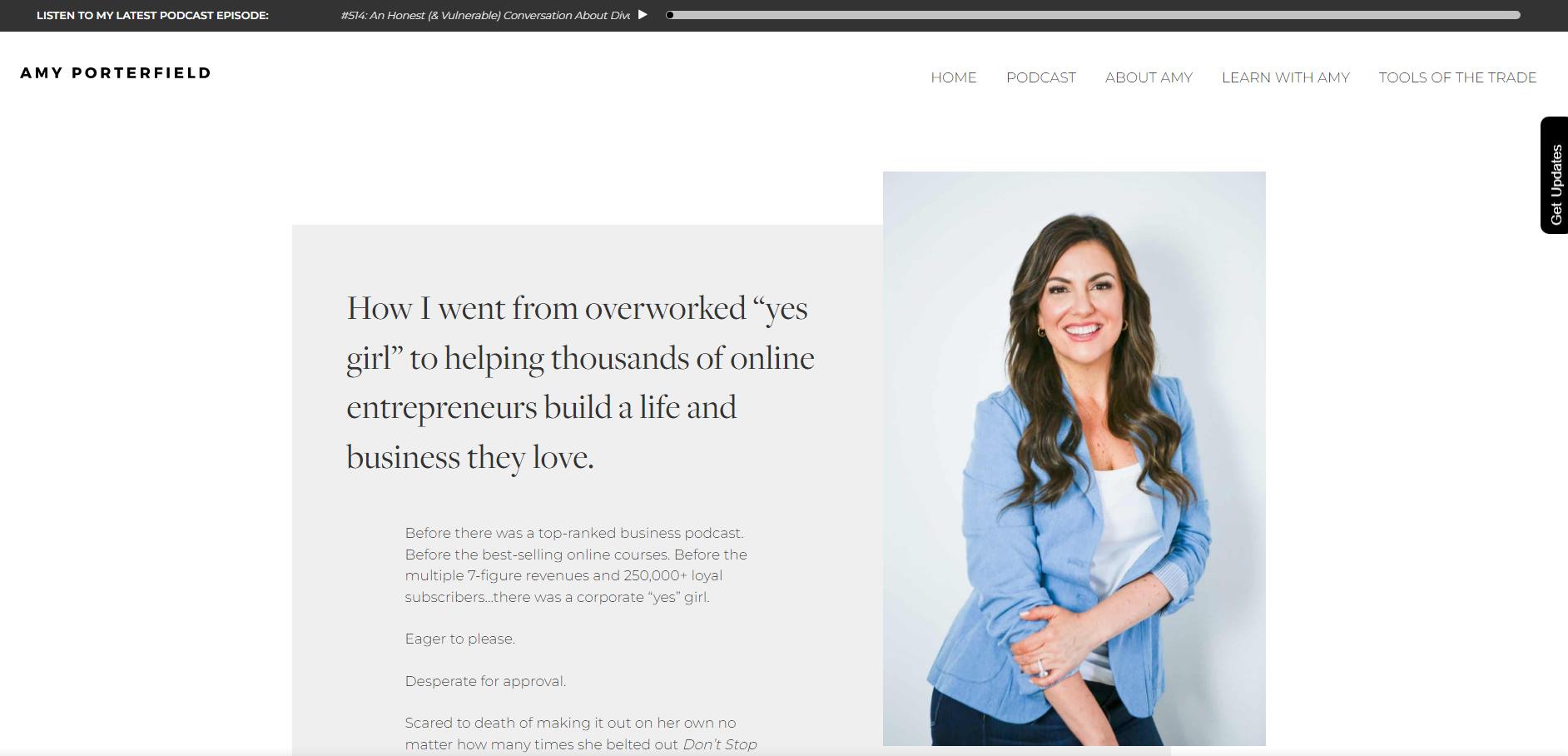
Frequently Asked Questions about Website Conversions
What is visitor conversion?
Visitor conversion refers to the process of converting website visitors into customers or taking a desired action, such as filling out a form, subscribing to a newsletter, or downloading a free resource.
The conversion rate is the percentage of visitors who take the desired action.
A high conversion rate indicates that a website is effective at persuading visitors to take the desired action, whether it’s making a purchase, filling out a form, or any other desired outcome.
Various tactics can be used to optimize visitor conversion, including clear and persuasive messaging, user-friendly website design, effective calls-to-action, and building trust with visitors through social proof and other credibility-building tactics.
How do you turn visitors into leads?
Turning visitors into leads involves capturing their contact information, such as their name and email address, so that you can continue to market to them and build a relationship over time. Here are some ways to turn visitors into leads:
- Offer a lead magnet: A lead magnet is a valuable resource, such as an ebook, white paper, or webinar, that you offer in exchange for a visitor’s email address.
- Use a pop-up form: Pop-up forms are a highly effective way to capture visitor information. Make sure your pop-up form is visually appealing, and consider offering a lead magnet or other incentive to encourage visitors to sign up.
- Create a landing page: A landing page is a dedicated page on your website that is designed to capture visitor information. Make sure your landing page is focused on a specific offer and includes a clear call-to-action.
- Use a contact form: Include a contact form on your website so that visitors can easily get in touch with you. Make sure your form is user-friendly and includes only the essential fields.
- Optimize your website: Make sure your website is optimized for lead generation by including clear calls-to-action, using eye-catching visuals, and offering valuable content.
How do you turn visitors into sales?
There are several strategies that can be used to turn website visitors into sales:
- Offer a clear value proposition: Make it clear what your product or service offers and how it can benefit your potential customers.
- Use persuasive language: Your website copy should be written in a way that persuades visitors to take action, such as making a purchase or signing up for a free trial.
- Use calls-to-action (CTAs): CTAs are buttons or links that encourage visitors to take a specific action, such as “buy now” or “sign up for our newsletter”. Make sure your CTAs are prominent and stand out on your website.
- Offer social proof: Use customer reviews, testimonials, and endorsements to build trust and credibility with your potential customers.
- Provide a free trial or demo: Offer a free trial or demo of your product or service to give potential customers a taste of what you have to offer.
- Follow up with email marketing: Once a visitor has provided their email address, use email marketing to nurture the relationship and encourage them to make a purchase.
What are some conversion examples?
Some examples of conversions include:
- Making a purchase: When a visitor completes a transaction on your website and buys a product or service.
- Filling out a form: When a visitor submits their contact information, such as their name and email address, in exchange for a free resource or to learn more about your business.
- Signing up for a newsletter: When a visitor subscribes to your email newsletter to receive updates and promotions from your business.
- Booking an appointment: When a visitor schedules an appointment or consultation with your business.
- Downloading a resource: When a visitor downloads an e-book, whitepaper, or other resource in exchange for their email address or contact information.
- Watching a video: When a visitor watches a video on your website, which can be a form of engagement and a way to educate them about your business.
- Adding an item to a cart: When a visitor adds an item to their online shopping cart, which can be a form of engagement and an indication of their interest in your product.
How many visitors does it take to get a sale?
The number of visitors it takes to get a sale can vary widely depending on many factors, such as the type of product or service being sold, the price point, the industry, the marketing tactics being used, and the overall effectiveness of the sales process.
It’s difficult to give a specific number or range as a benchmark because it can vary so much between businesses and industries. Some businesses may convert at a high rate with just a few hundred visitors, while others may need thousands or even tens of thousands of visitors to generate a single sale.
Ultimately, it’s important to focus on improving the overall conversion rate of your website or sales process rather than trying to hit a specific number of visitors or sales.
How do you get sales from existing customers?
Getting sales from existing customers requires building a relationship with them and providing ongoing value. Here are some strategies to consider:
- Upsell and cross-sell: Offer customers related products or services that complement what they’ve already purchased.
- Personalize offers: Use data and insights to create personalized offers that resonate with each individual customer.
- Provide exceptional customer service: Make sure your customers feel valued and appreciated by providing top-notch customer service.
- Offer exclusive deals and discounts: Give your existing customers special treatment with exclusive discounts or deals.
- Send regular communications: Keep your customers engaged and informed by sending regular newsletters or updates about your products or services.
- Ask for feedback: Ask your customers for feedback on their experience with your business and use their responses to improve your offerings.
- Provide ongoing support: Make sure your customers have the support they need to use your product or service effectively, and continue to provide value long after the sale.
How can pay per click (PPC) ads improve visitor conversion rates on a website?
Pay-per-click (PPC) ads can help with visitor conversion by driving targeted traffic to a website. When someone clicks on a PPC ad, they are taken to a landing page specifically designed to encourage a particular action, such as making a purchase or filling out a lead form.
By targeting the right keywords and audience, PPC ads can ensure that a business’s website appears at the top of the search engine results page (SERP), increasing visibility and potential for conversions.
What can you do as a busy small business owner to convert leads into customers?
Marketing is a critical aspect of any business, but for small businesses with limited resources, it can be especially challenging. Buying a small business marketing strategy can help alleviate some of that burden by providing a tested and proven plan for reaching new customers and driving sales.
This can save valuable time and resources that could be better spent on other important areas of the business, such as product development or customer service.
Additionally, a good marketing strategy can help to build brand awareness and reputation, leading to increased customer loyalty and repeat business.
It’s important to choose a marketing strategy that is tailored to the specific needs of your business and target audience, and to regularly evaluate and adjust your approach as needed to ensure ongoing success.
Your website is often your first point of contact with potential customers. If you want visitors to turn into paying customers and hand over their hard-earned cash, you need to first earn their trust. And one of the best ways to do that is by building credibility into your website.
Credibility can be conveyed in a number of ways, from establishing yourself as an expert in your field to featuring customer testimonials and reviews. When people see that others have had positive experiences with your business, they’re more likely to take the plunge and become paying customers themselves. So if you want to boost sales and conversions, make sure your website exudes credibility at every turn.
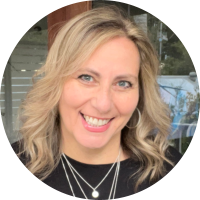 Ivana Katz from Websites 4 Small Business is an award winning web designer who builds websites that build your business. She provides unbeatable web design services to fit your budget.
Ivana Katz from Websites 4 Small Business is an award winning web designer who builds websites that build your business. She provides unbeatable web design services to fit your budget.
The end result? Professional, custom-made sites that give your business the extra oomph it needs to stand out from the competition and make an impact.
Whether you’re a brand-new business or an established one ready to improve your digital presence, Ivana makes it easy to get your business online very quickly. Her websites are professional, tailored to fit your budget, and give your business a serious boost.
Download your FREE copy of “Ultimate Website Design Secrets Blackbook – 10 Bulletproof Strategies for Designing an Outrageously Successful Website”

